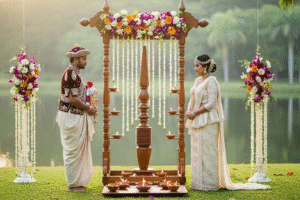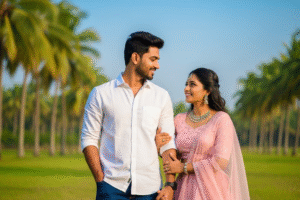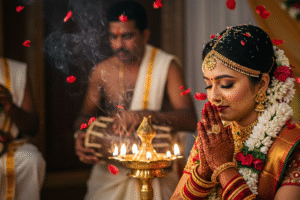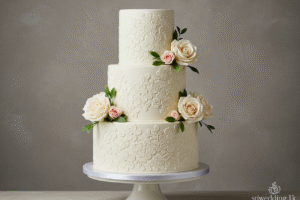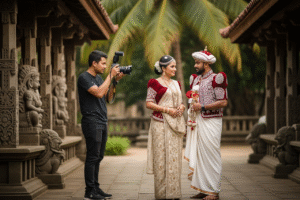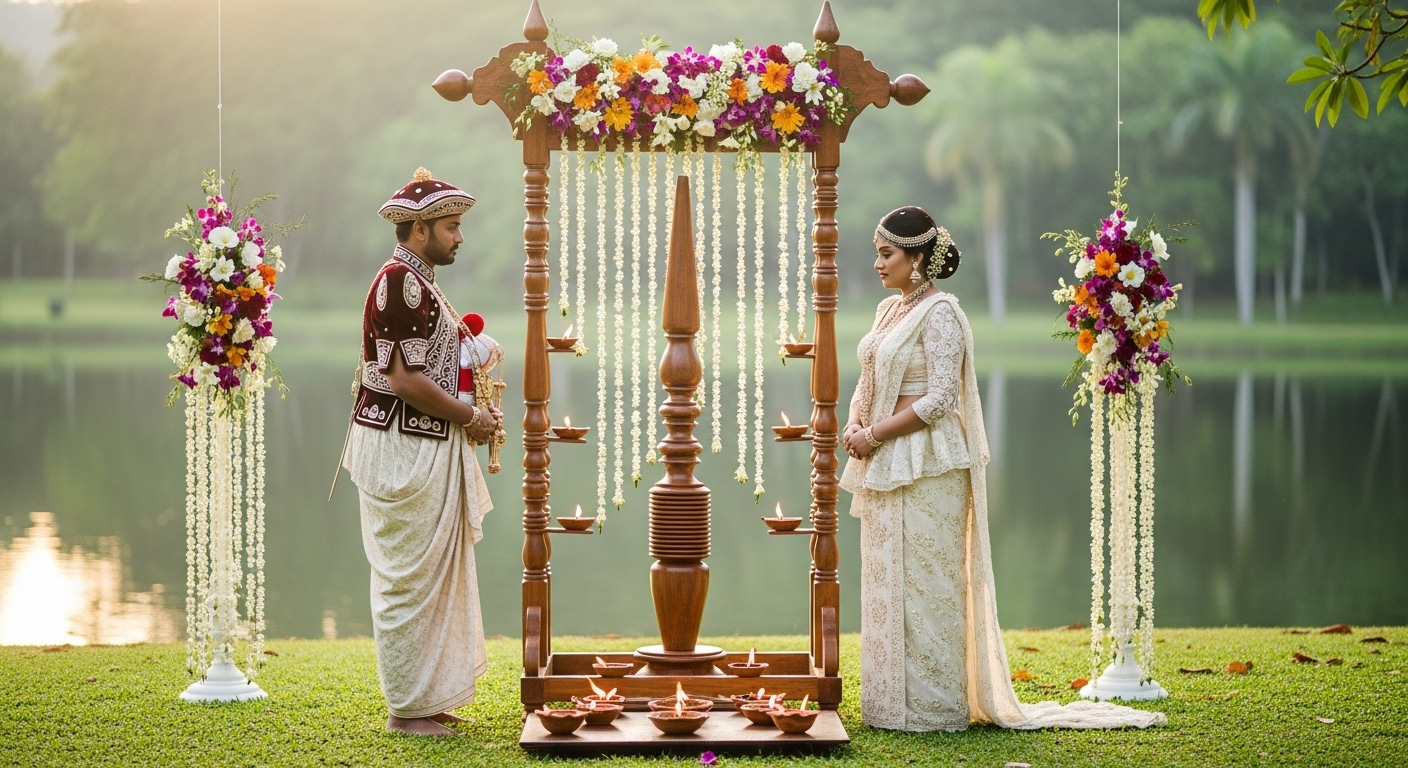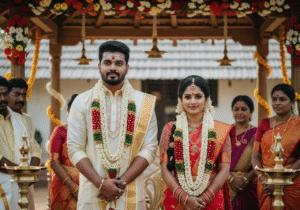
Tamil culture is one of the oldest civilizations in the world. Even today, many wedding rituals that have been passed down for over 1500 years are still faithfully followed, adding timeless beauty to the celebration. As a South Asian wedding photographer, I’ve captured many Tamil weddings, and I’m always amazed by the profound meaning behind each ceremony. Witnessing how love, care, and emotion unfold step-by-step throughout the wedding is truly a joy. Now, I’d love to share with you the 10 most important steps in a traditional Tamil wedding.
1. Groom’s Welcome and Aarthi Ritual
At the wedding venue, the groom is warmly welcomed by the bride’s family. The bride’s brother (or a close friend) washes the groom’s feet with water — a symbolic gesture of accepting him into the family. Then comes the Aarthi ritual, which means “removal of darkness.” Two married women circle a lighted plate (deepam) around the groom, praying for his protection from negative energies and for peace and prosperity in his life.
2. Ganesh Pooja (Vinayagar Pooja)
A priest purifies the wedding hall with sacred water and recites mantras. A prayer is then offered to Lord Ganesha, the remover of obstacles, to ensure the ceremony proceeds smoothly. The groom is given a ring made from grass (signifying purity of mind), and a sacred thread tied with turmeric is fastened to his wrist for protection. Following this, three married women perform a fertility ritual — mixing 9 kinds of grains and milk in a pot, symbolizing their blessings for abundance in the couple’s life.
3. Bride’s Arrival and Welcome
The bride enters the wedding venue surrounded by her family, friends, and the groom’s sister. She undergoes the same welcoming rituals as the groom — her feet are washed, and the Aarthi is performed to bless and protect her.
4. Shiva-Parvati Blessing Ceremony
This ceremony symbolizes the ideal couple — Lord Shiva and Goddess Parvati — whose union represents perfect harmony. Shiva stands for power and transformation, while Parvati embodies nurturing love and motherhood. Their legendary wedding overcame many challenges, symbolizing strength and unity. During this ritual, the couple embodies the divine connection of Shiva and Parvati.
5. Navagraha Pooja (Nine Planets Prayer)
A special prayer is offered to the Navagrahas — the nine planetary deities: Sun, Moon, Mars, Mercury, Jupiter, Venus, Saturn, Rahu, and Ketu. These celestial forces are believed to influence human lives. This ritual is meant to reduce the effects of harmful planetary alignments and to seek blessings from favorable ones. Following this, a Homam (sacred fire ritual) is performed, symbolizing an offering to Agni, the fire god.
6. Kanyadaanam – Giving Away the Bride
One of the most emotional moments in the ceremony — the bride’s parents officially “give away” their daughter in the presence of the groom’s family. The bride sits on her father’s lap, holding a coconut in her hands. Her father then places her hands, along with the coconut, into the groom’s hands — symbolizing, “We entrust our daughter to your care.” At that moment, the mother sprinkles holy water. The priest recites the names of three generations of ancestors, inviting both the divine and the gathered guests to witness the sacred union.
7. Mangalsutra & Gift Ceremony
The groom presents the bride with a silk saree (often red or golden) as a sign of welcoming her into his family. He also receives blessings for the Mangalsutra (sacred wedding necklace). The bride then changes into the new saree, returns to the stage, and garlands the groom.
8. Thali Tying Ceremony
This is the most significant moment in a Tamil wedding! The bride garlands the groom first. Then, they are seated as Shiva and Parvati would be — in a divine posture. As the nadaswaram and melam (traditional music) reaches its crescendo, the groom ties the thali (mangalsutra) around the bride’s neck. This marks her as his eternal partner. Guests shower the couple with flower petals and rice as a blessing.
9. Saptapadi – The Seven Sacred Steps
The couple walks around the holy fire seven times, each round accompanied by sacred Vedic chants. Each step represents one of seven vows or promises made to each other. Then, the groom places the bride’s feet on a black stone — symbolizing the strength of their love — and places a silver toe ring on her foot.
10. Blessings from Elders
As the wedding concludes, family and guests shower rice over the couple as a sign of blessings. Married women perform a final Aarthi to protect the couple and wish them well.
Conclusion
A Tamil Hindu wedding is a celebration of tradition, beauty, emotion, and spirituality. Every ritual carries profound meaning and heartfelt blessings for the couple’s journey ahead — one of love, harmony, and well-being. May this timeless tradition live on forever!




